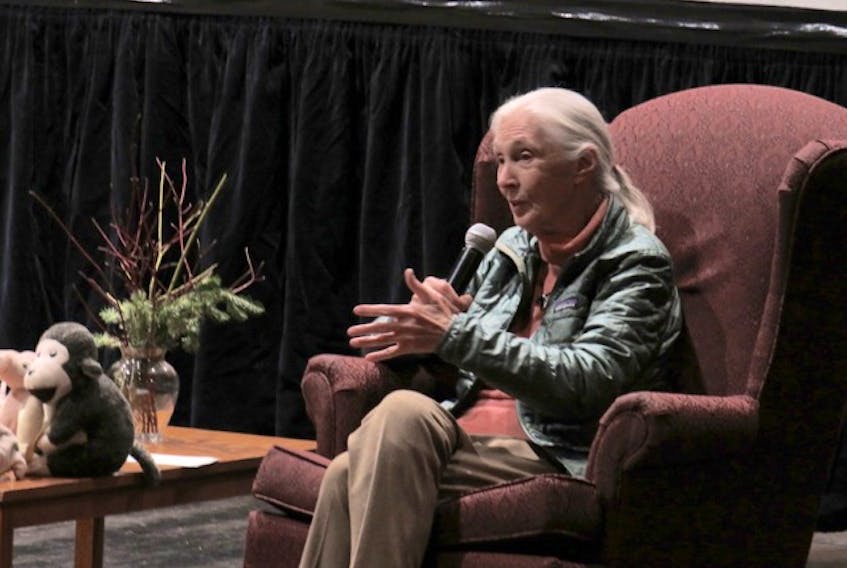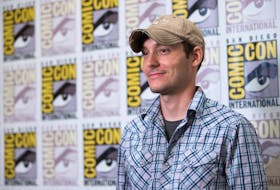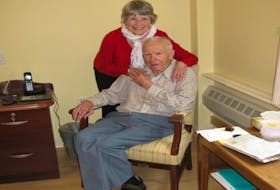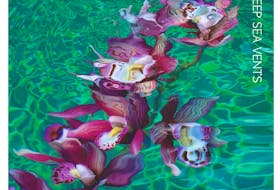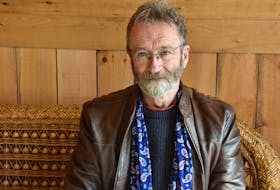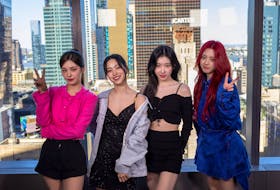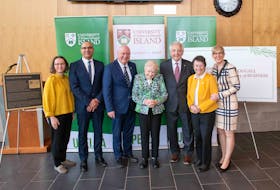WOLFVILLE, N.S. — If you’d never heard of Jane Goodall, you might be forgiven for thinking she’s a sweet elderly woman.
But at 85 Dr. Goodall, the famed primatologist, travels 300 days a year with several key messages to deliver. On April 8, she stopped at Wolfville’s Acadia University.
After offering a chimpanzee greeting call, Goodall explained she was born loving animals. Her mother cultivated that trait taking her on holidays to working farms. She made her first scientific observations to learn how hens lay eggs.
The first book to impress the young Jane was Tarzan of the Apes. At the age of 10, she thought her hero had married the wrong Jane.
Goodall began to obsess about going to Africa to study the continent's wild animals. Praising her mother again, she said, her parent never told her, “girls don’t do that kind of thing.”
Her mother suggested that, while it might take a lot of effort to realize her dreams, that was no reason to give up. Years later, that dream came true when she became a secretary to world-renowned Kenyan archaeologist Louis Leakey.
Although she had no scientific training, he took her under his wing in the early 1960s because she’d done a secretarial course.
After a year’s wait for funding, Goodall immersed herself in a study of the animal she calls most like us – the chimpanzee. In their natural habitat at Tanzania’s Gombe Stream National Park, she found herself giving each chimpanzee a name and observing their personalities.
Her open approach led Goodall to determine that chimpanzees, like humans, make and use tools.
She described the first time she saw a chimpanzee, one she called David Greybeard, use a twig to extract termites from a mound.
“It was exciting because, back then, scientists had decided that humans, and only humans, used and made tools,” recalled Goodall. “They were part of my family, I knew them so well.”
With a five-year-long childhood and plenty of gestures she recognized as close to human, Goodall said the chimpanzees proved they had a dark and brutal side, along with the ability to show compassion and true altruism.
After two years, Leakey arranged for her to go to Cambridge and go into a doctorate program in animal behaviour or ethology. Her professors called her unscientific for naming the chimpanzees, but she concluded they “were completely and utterly wrong.”
HUMANS IN ANIMAL KINGDOM
Living so close to the chimpanzees in Tanzania had taught Goodall that humans “are part of, not separate from the rest of the animal kingdom. I owe a great deal to the chimpanzees.”
She added, “I wish I was young all over again and back in Gombe in that wonderful tapestry of life.”
Embracing an arm full of ‘stuffies,’ Goodall spoke about their intelligence and told stories about octopi, crows and pigs and even forest rats that can smell out landmines.
A documentary in 1965 about her work, ‘Miss Goodall and the Wild Chimpanzees’, turned her into a global celebrity, and Goodall has been in the public eye ever since.
In 1977, she launched the Jane Goodall Institute, which aims to rescue orphaned chimps, conserve at-risk habitats and raise awareness about endangered species.
But it was in 1986 that Goodall explained her life was transformed by a conference she attended in Chicago. It included sessions on deforestation, captive chimps for medical experiments and the trade in bushmeat.
“I went to that conference as a scientist planning to carry on with an amazing life, and I left as an activist," she said. "Since October 1986, I haven't been more than three weeks consecutively in any one place, and that's only twice a year."
She has encouraged children to become environmental and social advocates, the development of antipoverty programs in the areas around African nature preserves, and to promote environmental stewardship. In Tanzania and six other African countries, Goodall began pushing for land preservation in the 1990s.
“Certainly, in Africa, where we do most of our work, it’s very, very clear that if you don’t work to improve the lives of people living around chimp habitats, they’ll give up saving the chimps. It just won’t work.”
COMPROMISED FUTURE FOR YOUTH
Goodall noted the extinction of species and the world’s reckless burning of fossil fuels as reasons for a compromised future for today’s youth
“We’ve been stealing it,” she stated. “I firmly believe the window is closing, but we can heal some of the harm.”
The youth program Goodall started in 1991, Roots and Shoots, aims to teach participants about interconnectedness and ways of helping. More than 4,000 people are involved in Canada alone and she said there are 150,000 groups internationally.
“Every single individual makes a difference every single day,” she said. “We get to choose what sort of difference we’re going to make.”
Goodall looks to examples of resilience like Nelson Mandela and Martin Luther King and, indeed the planet itself, for inspiration and reason to hope.
“Without hope you might as well give up,” she said. “My job is to give people hope. With difficult politicians at the top, we have to work quicker and work around them to give young people a base to take over.”
Answering questions from Grade 4/5 students in Cambridge posed by Andria Teather, the chief executive officer of her Canadian institute, Goodall called on school children to “do something like clean beaches.”
She concluded by saying, “these are very dark times we’re facing. But there’s a new spirit that we have to listen to.”
DID YOU KNOW?
The face of a Kings County youth was featured during one of the short videos Goodall screened. Now a university student in Toronto, Lily Bateman of Woodside has been involved in the Roots and Shoots program since she was 14.
Several years ago, after meeting Goodall and other mentors at a Toronto workshop, Bateman created her own project to engage Canning area elementary students in nature by using art.
Since the Goodall institute is based at the University of Toronto, Bateman has been able to continue her involvement during her post-secondary studies.
She has described Roots and Shoots as a global family that works to improve sustainability through helping the environment, animals and people.

